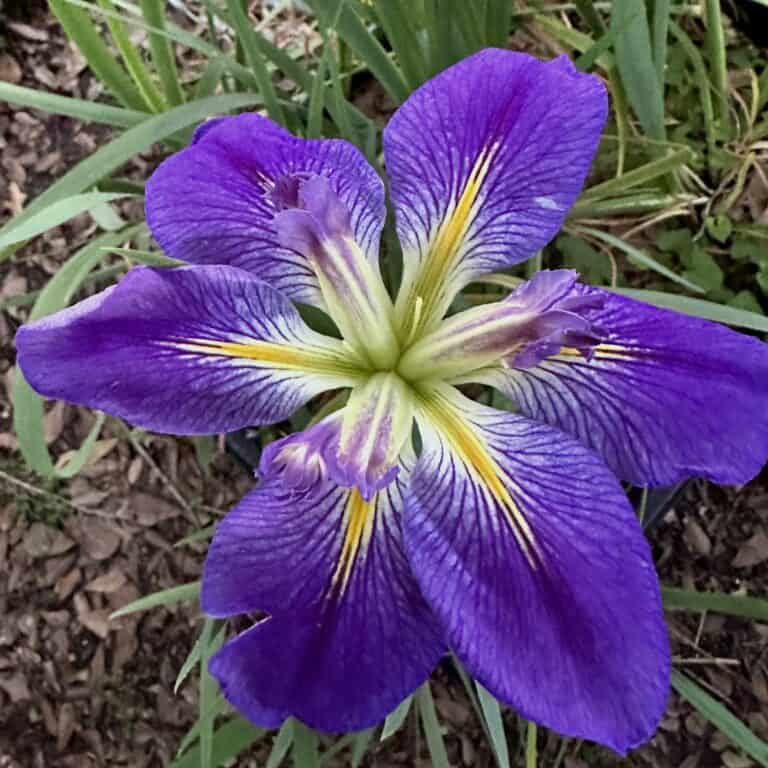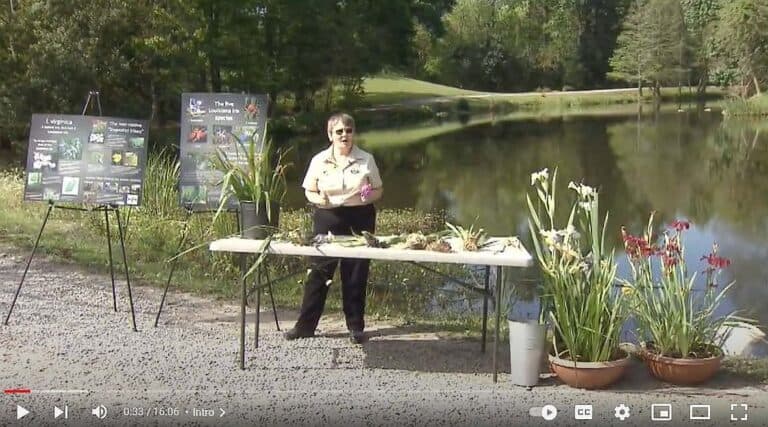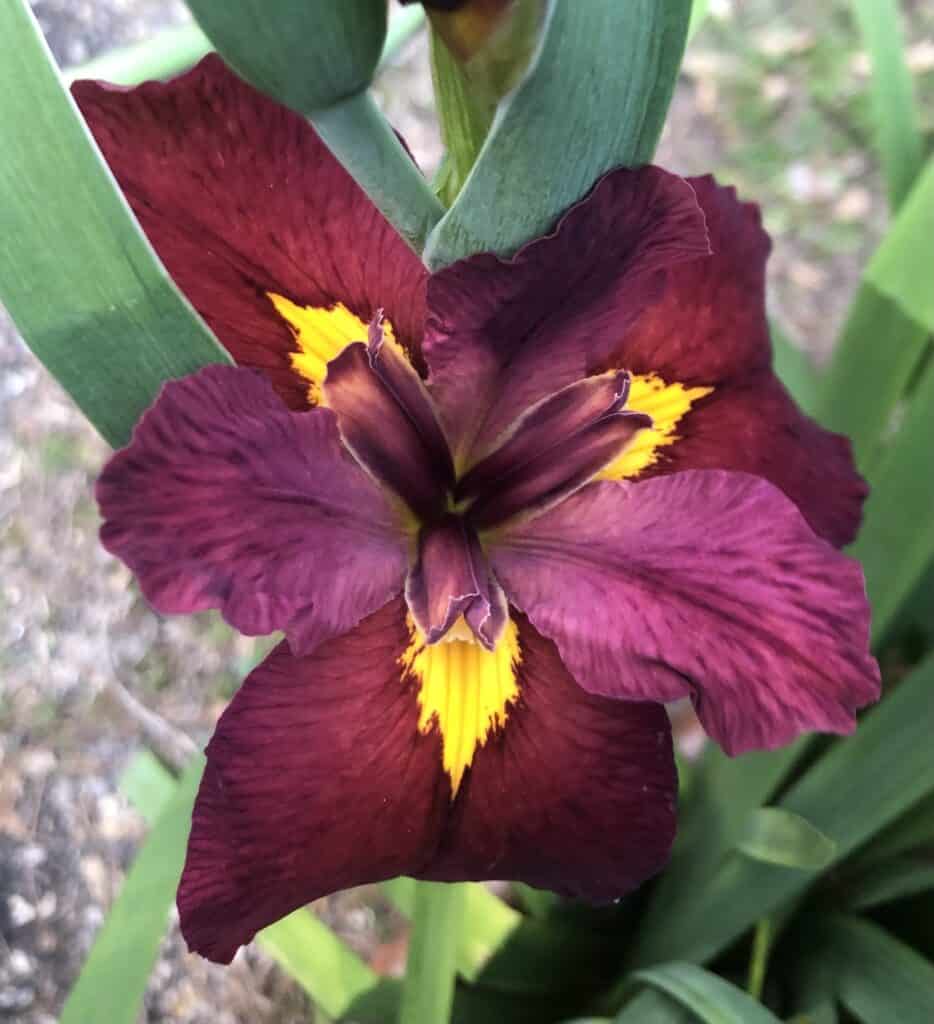Louisiana irises reach their peak visibility in April with many outstanding viewing opportunities in public and private gardens throughout New Orleans and surrounding parishes. Learn how to identify and grow our iconic State wildflower and Louisiana Super Plant.
Photo: ‘Ann Chowning’ by Karen Blackburn
The Louisiana iris offers a wide variety of flower colors, blue, burgundy, lavender, pink, purple, red, white and yellow. The iris can be found in swamps, thus the name “Swamp iris,” also in ditches and other wet areas. They bloom in the early spring, require at least 6 hours of sun to full sun. La Irises do not have a beard. They have a patch of color called a “Style” instead of a beard to show bees where to find to pollen.
Fall is the best time to plant Louisiana Irises as they begin to grow in the fall and grow throughout the winter to spring as they bloom in late March and April. You can plant irises at other times also. Do not plant irises deep in soil. Plant at same level it was growing in its pot making sure to just cover the rhizome. They may be grown in ground or in pots.
How can you be sure you have a Louisiana iris? Louisiana iris has a white area above the rhizome and if you cut the rhizome, it is white inside. Others have red coloring inside the rhizome and red coloring just above the rhizome and root system according to Eileen Hollander, Advanced Master Gardener.

Louisiana Iris
Irises grow best when waterlogged, prefer an organic, wet to moist environment. Use mulch to protect the rhizomes from scorching sun. Fertilize them once in the fall (October) and once in the winter (February). Irises have few pests or disease problems. Rust can occur in early spring. It is recommended to cut out the affected area and discard in the trash. Leaf miners may appear but are a minimal problem. Remove affected leaves and discard in the trash. Irises are mainly pollinated by the hummingbird. The “Style” is closed like a tube so that hummingbirds can pollinate. It has drooping petals, Iris giganticaerulea are the tallest of irises, has three standard petaloids that stand up straight. I. giganticaerulea may grow to 10 feet tall and are found in thick swamps. It is the wettest of Irises and can tolerate a reasonable amount of sun. They come in blues, rare whites, off white and rarely pink. They live in fresh water, no salt and are known as the Louisiana state wildflower.
The Louisiana species of iris are: Iris hexagona, I. fulva, I. brevicaulis, I. nelsonii and I. giganticaerulea. The Louisiana iris grows all over the U.S but mainly in Louisiana. Hexagona, brevicaulis and nelsonii are becoming extinct. Fulva is short and grows in ditches between New Orleans and Baton Rouge. Also known as “Copper Iris,” the petals droop and they have an open style where bees and hummingbirds can pollinate it. Iris nelsonii also called ‘Abbeville Red’ is found only in Abbeville, Louisiana., in October.

Louisiana Iris, Nursery Island, CityPark 2024
Imposters are often labeled as Louisiana iris but are not. True Louisiana Irises do not have a midrib in the leaf. Iris Virginica is a native Iris but not a Louisiana Iris and is found mostly on the north shore of Lake Pontchartrain.
Louisiana irises may be purchased from specialty nurseries, online, nurseries that specialize in aquatic plants, from clubs and organizations at sales such as Greater New Orleans Iris Society annual sale in October, Spring Iris Show in City Park, regular meeting rallies and giveaways, Pelican Greenhouse in City Park and Botanic Garden at Independence Park, Baton Rouge.

Karen Blackburn
Master Gardener of Greater New Orleans
Sources:
Patrick O’Connor, Hybridizer, president GNOIS
Eileen Hollander, GNOIS, MGGNO, Advanced Master Gardener
Louisiana Gardener’s Guide by Dan Gill and Joe White
Learn More:
LA Iris named Louisiana Super Plant
LA Irises, Master Gardener Eileen Hollander

- Louisiana Irises (Part 1)
- Louisiana Irises (Part 2)
- Louisiana Irises (Part 3)
- Louisiana Irises, How to Care for, Jason Stagg, LSU Agcenter

